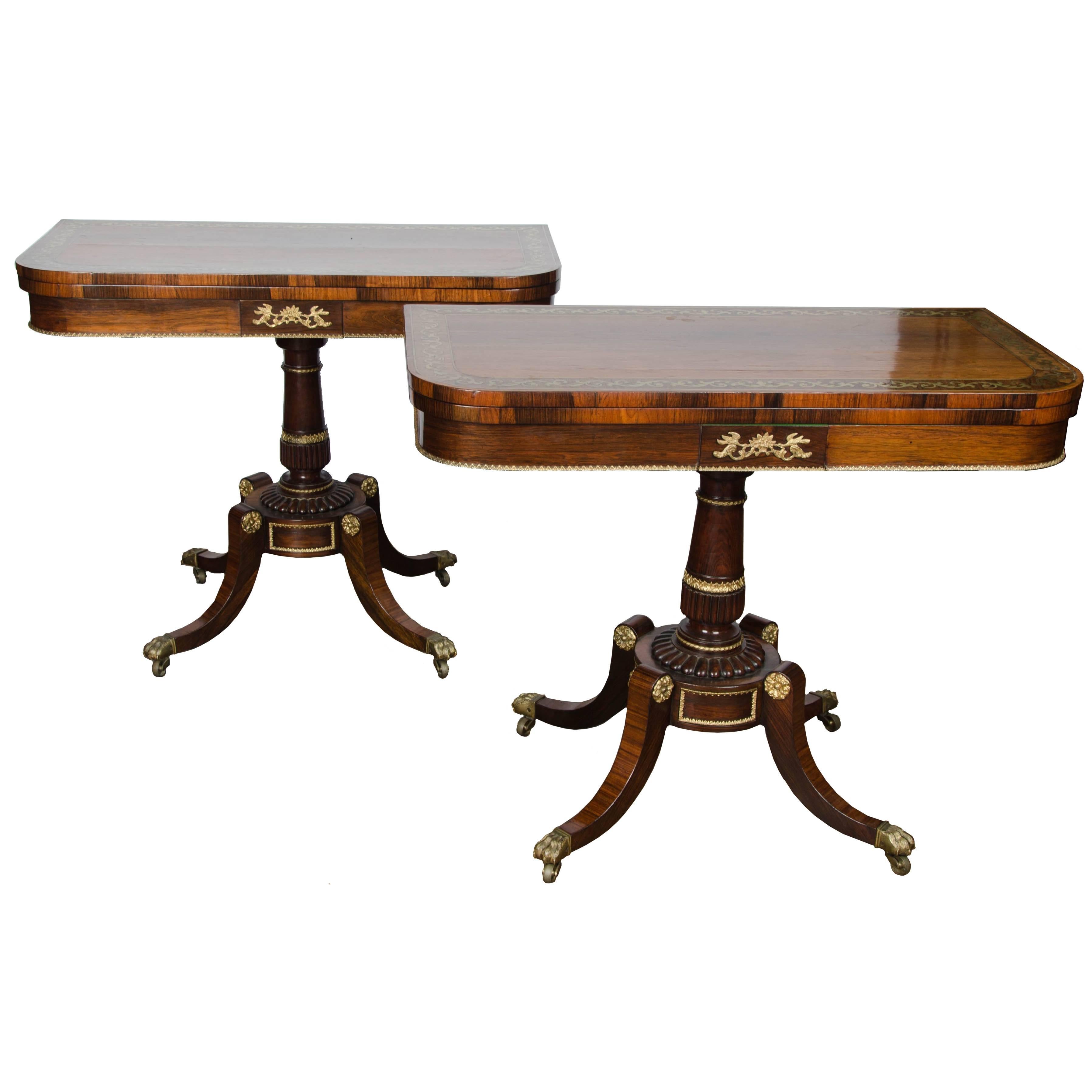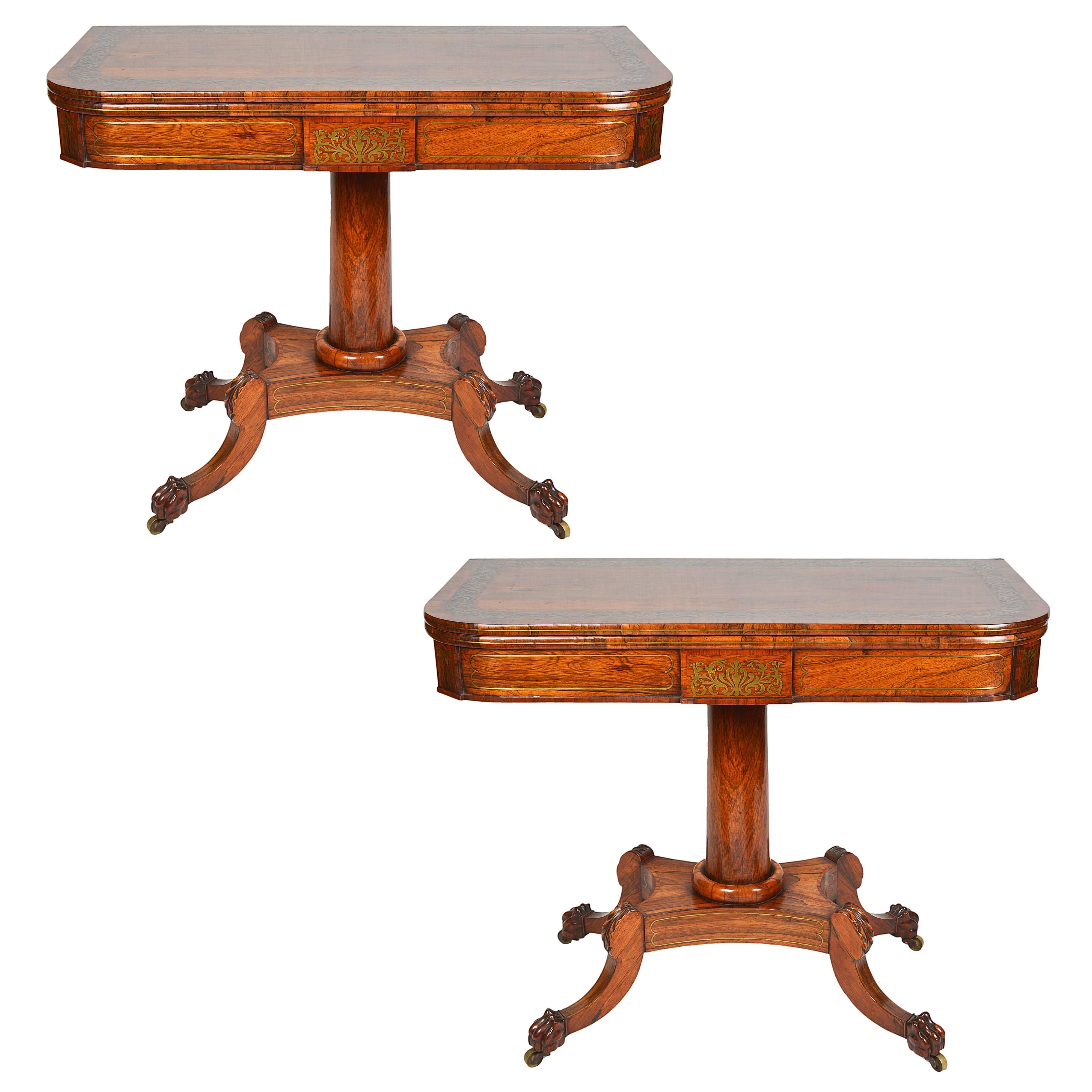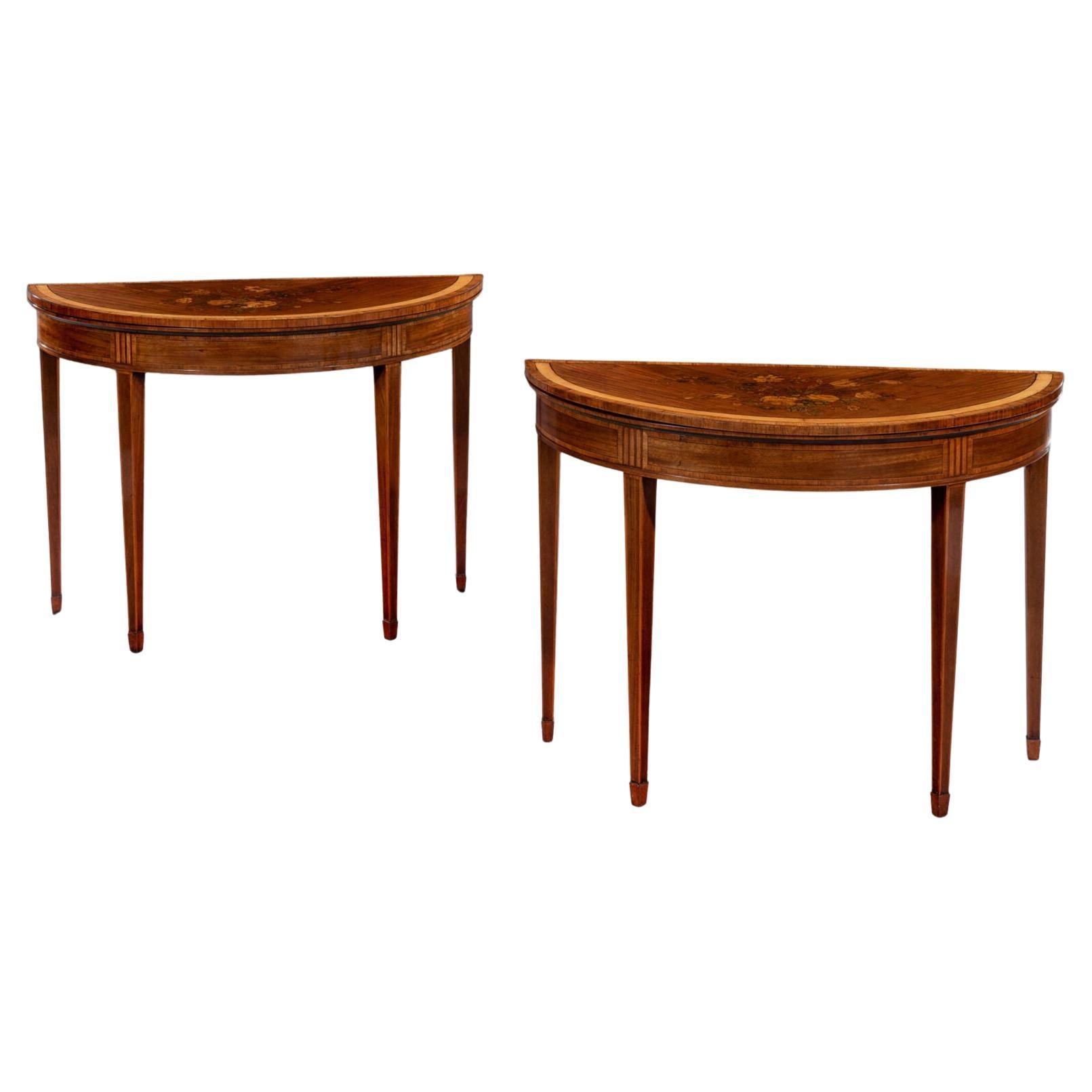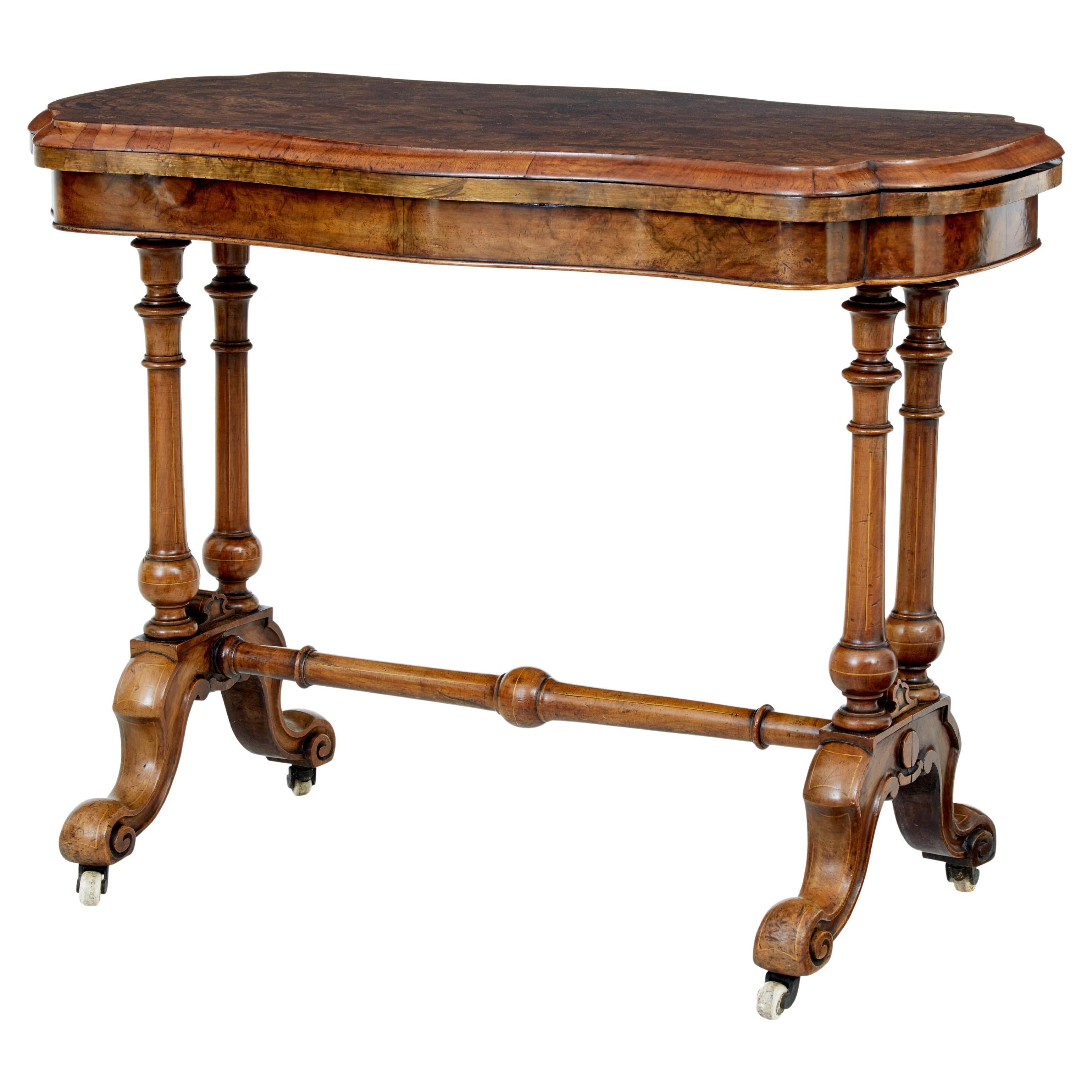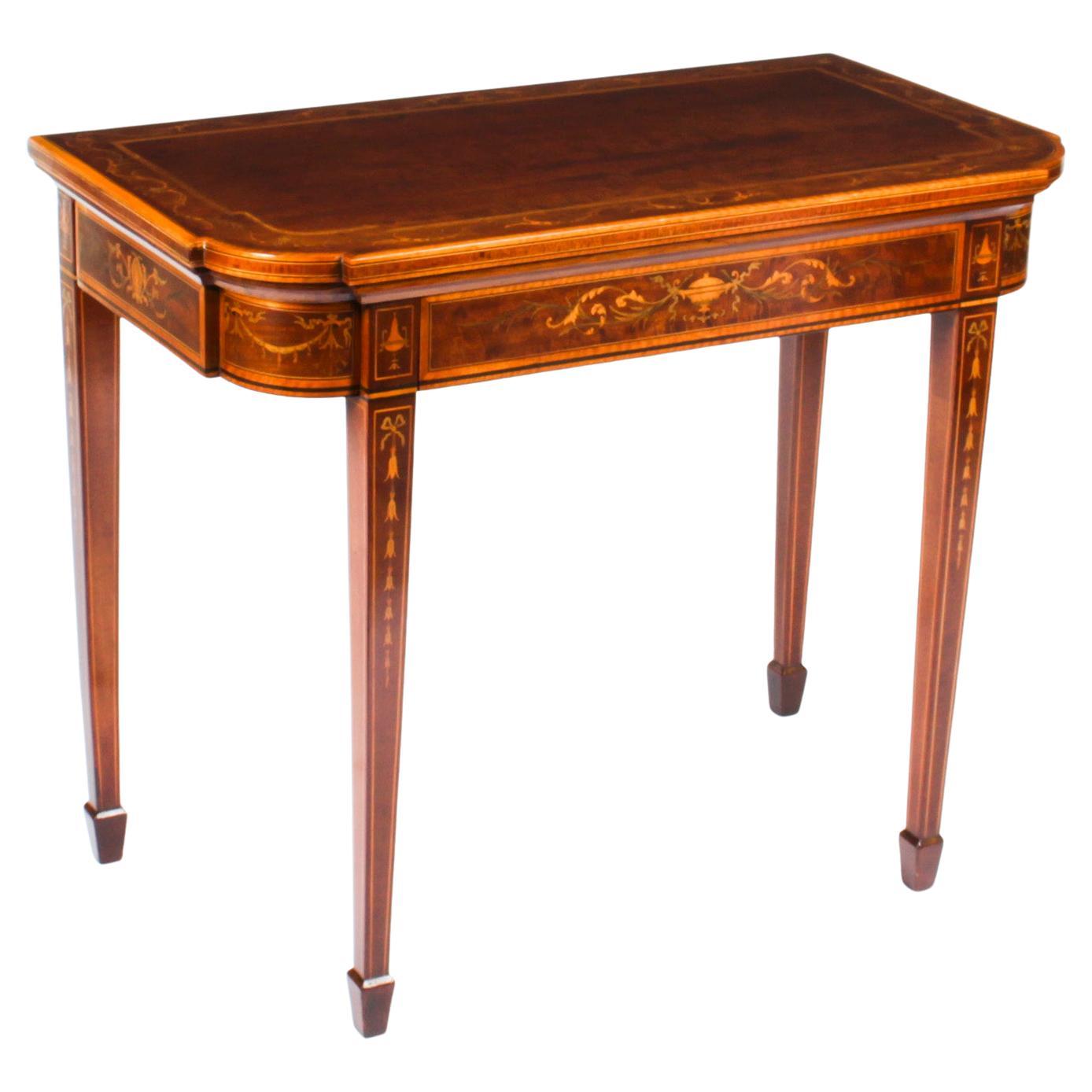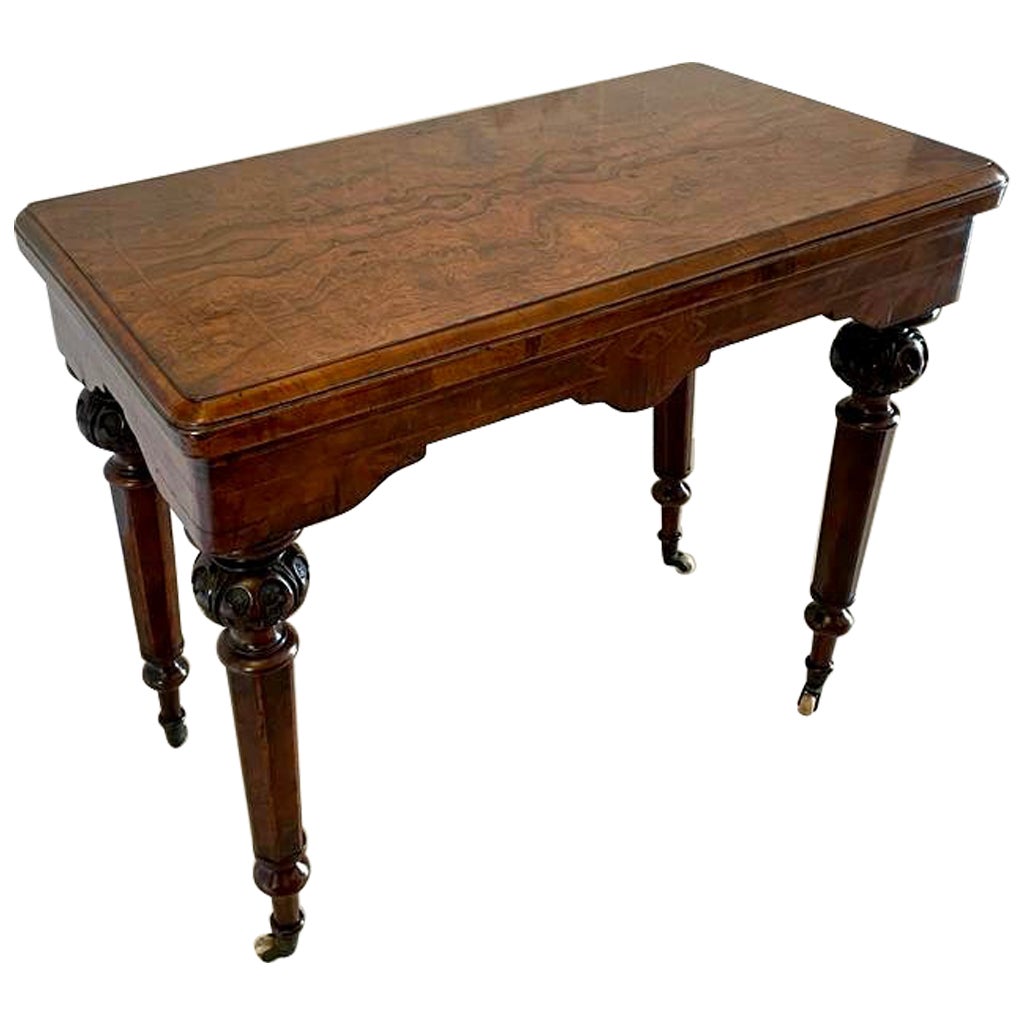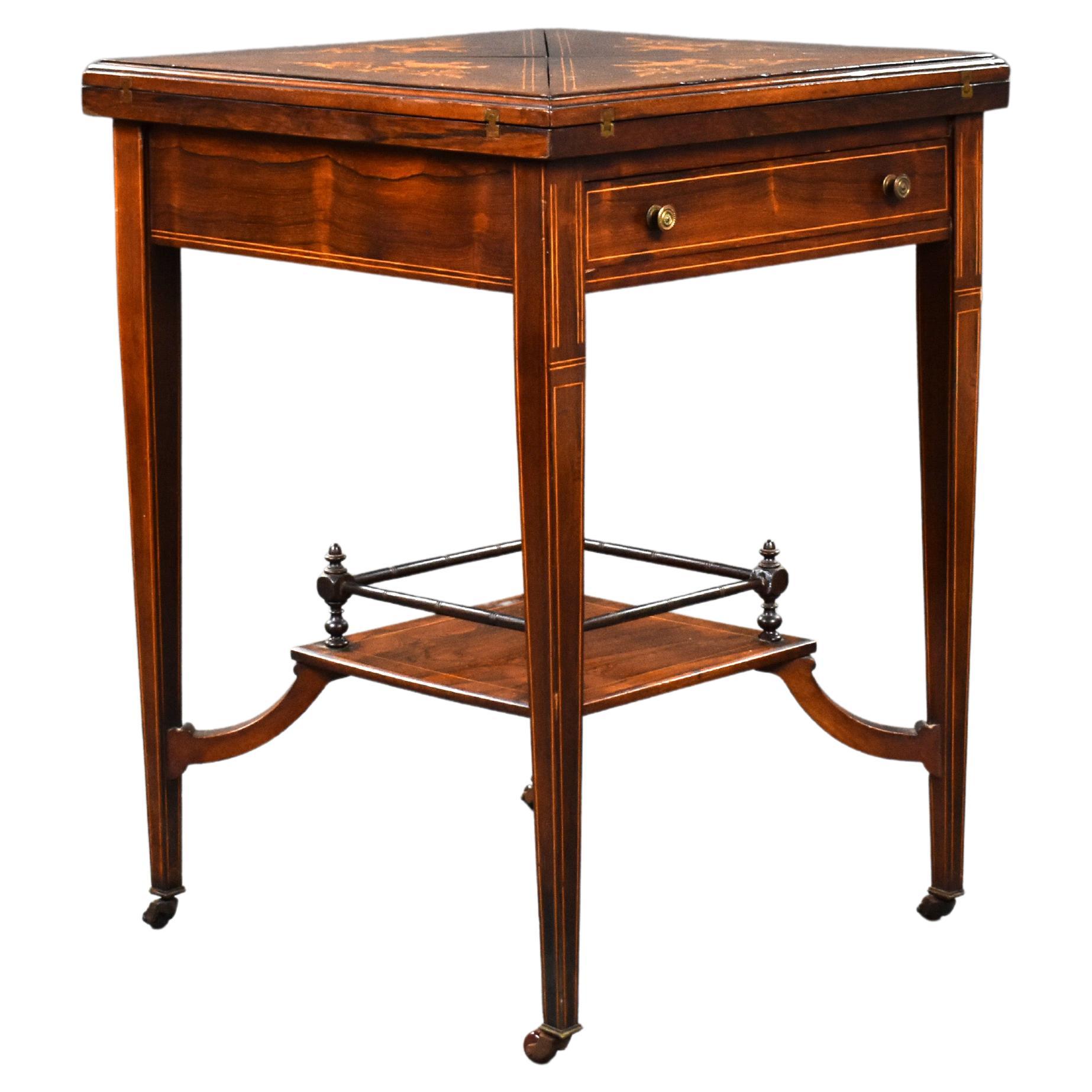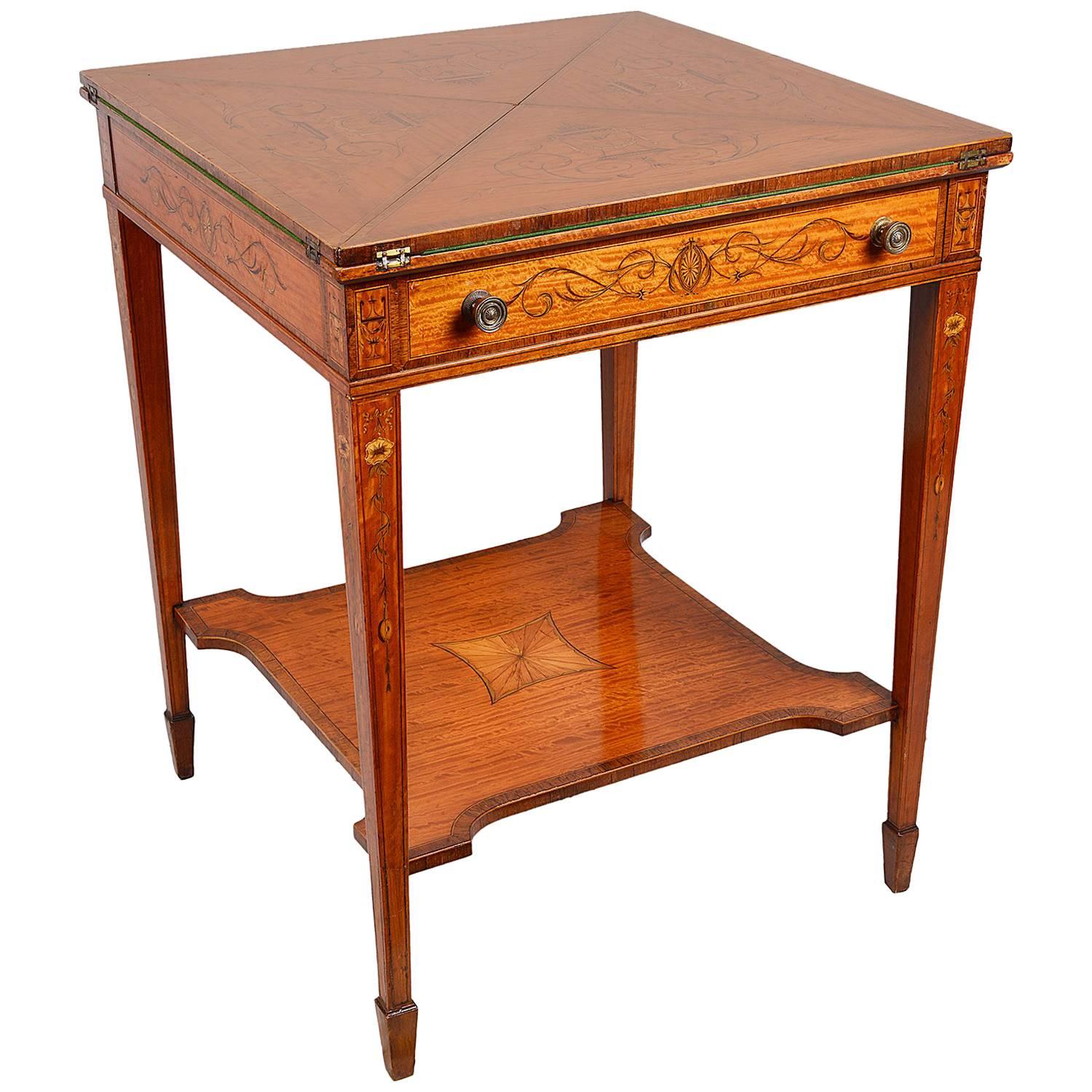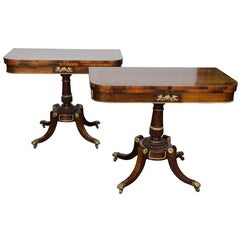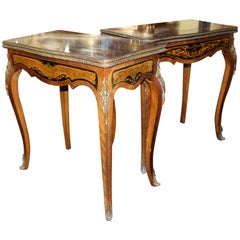
Pair of Heavily Inlaid Victorian Card Tables
View Similar Items
1 of 14
Pair of Heavily Inlaid Victorian Card Tables
About the Item
- Dimensions:Height: 30.52 in (77.5 cm)Width: 30.32 in (77 cm)Depth: 16.15 in (41 cm)
- Period:
- Date of Manufacture:19th Century
- Condition:Wear consistent with age and use. Good condition. Sound structure, original mounts. A few marks to finish commensurate with age. Very close pair, slightly different inlay to each table.
- Seller Location:Worcester, GB
- Reference Number:Seller: 96401stDibs: LU1743212679542
You May Also Like
- Pair of English Victorian Inlaid Walnut Card-Tables, circa 1865Located in Salisbury, GBPair of magnificent Victorian walnut card-tables This Pair of Victorian walnut card-tables are matched. They were made in the same workshops but married together later. Each table ...Category
Antique 1860s English Victorian Card Tables and Tea Tables
MaterialsWalnut
- Pair of Regency Rosewood Brass Inlaid Card TablesLocated in Brighton, SussexA good quality pair of Regency period Rosewood, brass inlaid card tables. with central turned pedestal, raised on four splay ormolu mounted legs, terminating in the original brass cl...Category
Antique 1820s English Regency Card Tables and Tea Tables
MaterialsOrmolu
$19,171 / set - Pair of Regency Period Brass Inlaid Card TablesLocated in Brighton, SussexA very good quality pair of Regency period brass inlaid card and tea tables. The tops with scrolling foliate brass inlaid decoration to the crossbanding and frieze. Raised on a turne...Category
Antique 19th Century English Regency Card Tables and Tea Tables
MaterialsBrass
$28,118 / set - Pair of George III Marquetry Inlaid Card TablesBy John CobbLocated in Shipston-On-Stour, GBA fine pair of 18th century George III Hepplewhite period floral marquetry inlaid demi-lune card tables attributed to John Cobb. The semi-elliptical sabico and floral marquetry top ...Category
Antique 1780s English George III Card Tables and Tea Tables
MaterialsMahogany, Tulipwood, Sycamore, Satinwood
- 19th century Victorian inlaid walnut card tableLocated in Debenham, SuffolkDecorative high Victorian walnut card table circa 1870. Shaped burr walnut top with inlaid patterns and cross banded decoration. Top swivels to reveal a storage well and opens to a...Category
Antique Late 19th Century English High Victorian Card Tables and Tea Tables
MaterialsWalnut
- Antique Victorian Mahogany & Inlaid Card Games Table 19th CenturyLocated in London, GBThis is a fabulous antique Victorian mahogany, satinwood and marquetry games table in the manner of Edwards & Roberts, circa 1860 in date. It is made of beautiful flame mahogany and satinwood with elegant satinwood inlaid and penwork floral and foliate decoration of ribbons, bellfowers and garlands.. The shaped hinged top opens to reveal a fabulous green baize lined gaming interior for playing cards, above a frieze fitted with a drawer and decorated by a beautiful classical urn. The table is raised on elegant square tapering legs terminating in spade feet. It is an elegant piece which will enhance a special room in your home. THE BOTANICAL NAME FOR THE MAHOGANY THIS ITEM IS MADE OF IS SWIETENIA MACROPHYLLA AND THIS TYPE OF MAHOGANY IS NOT SUBJECT TO CITES REGULATION. Condition: In excellent condition having been beautifully cleaned and polished in our workshops, please see photos for confirmation. Dimensions in cm: Height 74 x Width 89 x Depth 48 Dimensions in inches: Height 2 foot, 5 inches x Width 2 foot, 11 inches x Depth 1 foot, 7 inches Marquetry is decorative artistry where pieces of material (such as wood, pewter or brass silver) of different colours are inserted into surface wood veneer to form intricate patterns such as scrolls or flowers. The technique of veneered marquetry had its inspiration in 16th century Florence. Marquetry elaborated upon Florentine techniques of inlaying solid marble slabs with designs formed of fitted marbles, jaspers and semi-precious stones. This work, called opere di commessi, has medieval parallels in Central Italian "Cosmati"-work of inlaid marble floors, altars and columns. The technique is known in English as pietra dura, for the "hardstones" used: onyx, jasper, cornelian, lapis lazuli and colored marbles. In Florence, the Chapel of the Medici at San Lorenzo is completely covered in a colored marble facing using this demanding jig-sawn technique. Techniques of wood marquetry were developed in Antwerp and other Flemish centers of luxury cabinet-making during the early 16th century. The craft was imported full-blown to France after the mid-seventeenth century, to create furniture of unprecedented luxury being made at the royal manufactory of the Gobelins, charged with providing furnishings to decorate Versailles and the other royal residences of Louis XIV. Early masters of French marquetry were the Fleming Pierre Golle and his son-in-law, André-Charles Boulle, who founded a dynasty of royal and Parisian cabinet-makers (ébénistes) and gave his name to a technique of marquetry employing brass with pewter in arabesque or intricately foliate designs. Edwards & Roberts The firm Edwards & Roberts was one of the best English antique furniture cabinet makers of the second half of the eighteenth century. The company was founded in 1845 and by 1854 was trading as ‘Edwards & Roberts’, 21 Wardour Street, Antique and Modern Cabinet...Category
Antique 1860s English Victorian Card Tables and Tea Tables
MaterialsMahogany, Satinwood

